Maroshek's "Secret" anti-tank rifle
One way or another, but this video forced me to study weapons and its ammunition in more detail, but in the process of searching for information, a lot of conflicting data was found, ranging from store capacity to trunk drilling. Let’s try to make out all the interesting points that I found and, if possible, clarify somewhere with facts, and somewhere just resorting to common sense.
I do not pretend in this material to the ultimate truth, let's call it just a discussion of some well-known controversial points.
Designation anti-tank gun Wz.35
The full name of Maroshek’s anti-tank rifle (and lieutenant Felshtyn, Sketke, and Vilnitschytsa) will not cross out people stories) Karabin przeciwpancerny wz.35, in Germany designated as PzB 35 (p), in Italy received the designation Fucile Contracarro 35 (P). However, you can often find the designation of this weapon Maroszek Kb Ur wz.35. Part of the name Ur according to the most common version, which is considered official, appeared because of the atmosphere of secrecy around the weapon. So Ur means that the weapon is not intended for the Polish army, but for export to Uruguay.
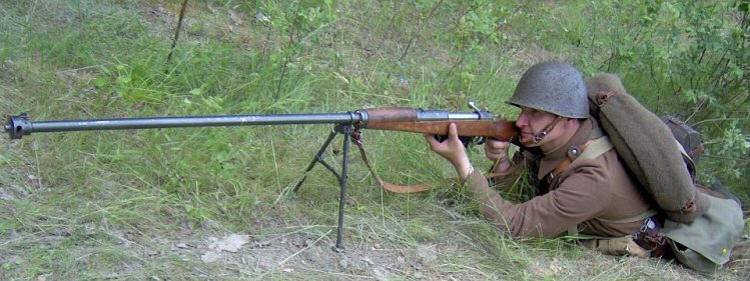
It cannot be ruled out that this is completely true, however, in the weapon itself there are absolutely no latest solutions that would have to be hidden. The anti-tank gun itself is absolutely not noticeable from a technical point of view, the ammunition is more interesting. Well, PTR is a highly specialized weapon, you can understand the secrecy around projects for aviation, fleetclassified development of armored vehicles, even for handguns at the development stage, secrecy can be justified if it is used in large quantities and at a level higher than what the enemy has. In this case, this is just an enlarged "bolt" rifle. Although the big bosses are sometimes still those entertainers.
Much more believed in the version that Maroshek's PTR was originally originally designed for export to Uruguay, but either the transaction did not take place, or it was decided that “you yourself need such a cow”, and even now they do not always manage to correct all the documentation when it’s enough to click a couple of keys. Unfortunately, the documents confirming this have not been preserved, or they have not been, so it is not possible to prove something convincing, however, and the version of secrecy has no valid reasons behind it.
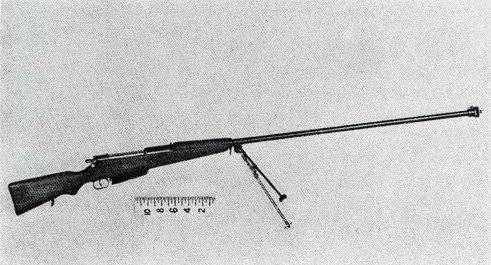 The fact that the anti-tank gun was delivered to the troops in sealed boxes and personnel was not allowed to familiarize themselves with the weapon, and the unpacking was allowed almost in the personal presence of the commander-in-chief, also speaks in favor of the “secrecy” of weapons. There is another explanation for this phenomenon, which concerns the resource of the barrel, the ammunition for this weapon and the number of Maroszek’s anti-tank guns, but this is slightly lower, so this argument can be ignored.
The fact that the anti-tank gun was delivered to the troops in sealed boxes and personnel was not allowed to familiarize themselves with the weapon, and the unpacking was allowed almost in the personal presence of the commander-in-chief, also speaks in favor of the “secrecy” of weapons. There is another explanation for this phenomenon, which concerns the resource of the barrel, the ammunition for this weapon and the number of Maroszek’s anti-tank guns, but this is slightly lower, so this argument can be ignored.Cartridge for Maroshek anti-tank rifle
As mentioned above, the anti-tank gun itself does not have any remarkable features, much more interesting than the ammunition that was used in it. There is little information about the 7,92X107 cartridge, and it is inconsistent.
First of all, the information on how the armor-piercing effect was achieved when using this ammunition is not joined in some sources speaks about the tungsten armor-piercing core of the bullet. In others, that the core was lead, and the destruction of armor was achieved due to the high speed of the bullet, more than 1200 meters per second.
Let's start with the version of the tungsten core cartridges. Usually in the text, where there is a mention of the 7,92x107 cartridge with a bullet with a core of tungsten, it is also said that the Poles were the first to use tungsten for these purposes, which is precisely because of the high armor penetration rate of the bullets of these cartridges and had secret status. Well, first of all, the first were not the Poles, but the Americans. In particular, Charles Stone received a patent for a bullet with a tungsten core in 1918. But this is if we are talking about clean, fairly expensive tungsten. If we are talking about tungsten carbide-based alloys, then it was not the Poles who were the first. In 1935, the same Germans had already manufactured cartridges with an armor-piercing bullet with a tungsten carbide-based core. So, returning to “secrecy”, there was no need for this secrecy. By the way, cartridges with such bullets are far from the cheapest pleasure, which can be explained by the lack of access to weapons in the army - a banal economy.
So was there an armor piercing core in 7,92x107 cartridges or not? Argued to answer this question will help the test results, which were conducted in the USSR Academy of Arts in 1941-1942. Two types of weapons took part in these tests: the Polish PTR Maroszek and the German anti-tank gun PzB-39. The test results for both the PTRs were about the same, the German weapons only slightly won in Polish against armor-piercing. Such a comparison is not entirely correct, however, nonetheless. The bullet of the cartridge 7,92Х94, released from the German PTR, has an initial speed of 1210 meters per second with a mass of 14,58 gram, the bullet has an armor-piercing core based on tungsten carbide. The bullet of the cartridge 7,92Х107, released from the Polish anti-tank gun, has an initial speed of 1275 meters per second and a mass of bullets in 15,93 gram.
It is logical to assume that at similar results on armor penetration, at least some armor-piercing core was present in Polish bullets, otherwise why would the Germans then place it in their bullets? Such a comparison can be considered incorrect only because the mass and speed of the Polish bullet were taken for a missile projectile just with a lead core.
The existence of bullets with a lead core is not questioned, since the bullets with such bullets have been preserved. Much more interesting is the description of the behavior of such bullets when hit by equipment in armor. So, in the cesspool of the collective mind of Wikipedia, it is said that due to the high speed the bullet broke through the armor, and the lead core flew into this gap and hit the crew and equipment units. Something tells me that it was all different. Due to the high speed and soft core, the bullet could really destroy the armor, due to the rapid transfer of its kinetic energy to point-shaped armor plastic, only the soft lead, and the fragments of the armor would be the striking element. And this, by the way, is also not a discovery, the crews of armored vehicles met this phenomenon back in World War I, so there is no secret here either. By the way, there is a description on Wikipedia of how such bullets "worked" when they hit a person who has a bad mood and wants a little humor - feel free to come in and smile.
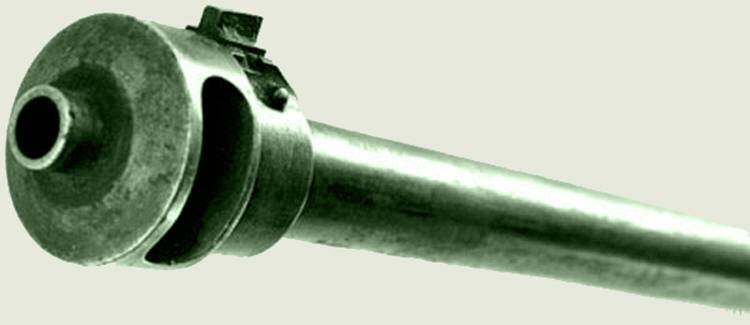
In my opinion, there were both types of ammunition, but the presence of bullets with a bullet in which a capsule with an irritating composition based on chlorine was placed raises some doubts. It cannot be ruled out that such ammunition was developed, but it is very unlikely that this development was successful. An example of this could be the fact that domestic designers conducted similar studies for 14,5x114 munitions, and concluded that the amount of irritant in the pool was not enough for the crew of the armored vehicles to experience anything more than discomfort. In addition, such ammunition had a limited storage time, and less ability to break through armor. Unfortunately, the instructions on the shooting case referenced by the presenter in the above-mentioned video could not be found, yes, honestly, he didn’t really try, because Polish is only available with a translator from Google. The presence of the lines given in the video cannot be ruled out, since it is quite possible that at the time of printing the instructions for studying the possibility of making a bullet with an annoying composition had just begun and, looking ahead, put in the text a description of how to act with this ammunition.
The design of the barrel anti-tank gun Wz.35 and its resource
One of the common myths about this weapon is the presence of a conical barrel and the use of Gerlich's bullets in it. Apparently, the halo of “secrecy” around this PTR has become fertile ground for various speculations. Seeing information about the speed of a bullet, people began to look for an explanation of where such speed came from, and came across conical trunks, because a more complex and exotic explanation always seems to be correct and correct.
 In fact, no conical drilling of the barrel bore was used in Wz.35, which can be seen at least in the cartridge bullet for this weapon, because there are no leading skirt belts on the bullet, which means that the barrel from which the bullet flies out is cylindrical, and not conical
In fact, no conical drilling of the barrel bore was used in Wz.35, which can be seen at least in the cartridge bullet for this weapon, because there are no leading skirt belts on the bullet, which means that the barrel from which the bullet flies out is cylindrical, and not conicalAt one of the Polish forums, it was possible to find information that in 1938, the development of a CRP with a tapered barrel and a cartridge with a bullet with two driving belts was really begun. This PTR was supposed to use a barrel with a diameter at the muzzle 7,92 of a millimeter, and at the chamber 11 of a millimeter. In 1939, the documentation for this project was taken out of the country to France, and this was all over. So, perhaps, the mixing of everything and everything in a pile and gave rise to Wz.35 with a conical trunk, though not in reality, but only on the Internet.
 There is a difference in the information on the resource of the barrel, as many sources say about 20-30 shots, which is hard to believe, since with such a resource no one would begin mass production of weapons. In fact, the resource of the barrels was really low - about 300 shots, this explains the presence of as many as three interchangeable barrels complete with an anti-tank gun. By the way, this is another argument in favor of the fact that the weapons remained in sealed boxes in the troops, not because of considerations of secrecy, but because of banal economy.
There is a difference in the information on the resource of the barrel, as many sources say about 20-30 shots, which is hard to believe, since with such a resource no one would begin mass production of weapons. In fact, the resource of the barrels was really low - about 300 shots, this explains the presence of as many as three interchangeable barrels complete with an anti-tank gun. By the way, this is another argument in favor of the fact that the weapons remained in sealed boxes in the troops, not because of considerations of secrecy, but because of banal economy.Information about the life of the barrel in 20-30 shots originates apparently from the results of the start of work on ammunition and weapons for him, there is no other explanation for this, except that one zero could lose.
Device and characteristics of Maroshek anti-tank rifle
As mentioned above, there is nothing remarkable about the Wz.35 MFR, both in design and in characteristics it is the usual MTR of its time. However, this does not prevent the Polish journalists from telling about its uniqueness and that they could have defeated Germany with 1939 in this weapon if the USSR had not intervened, but not about it now.
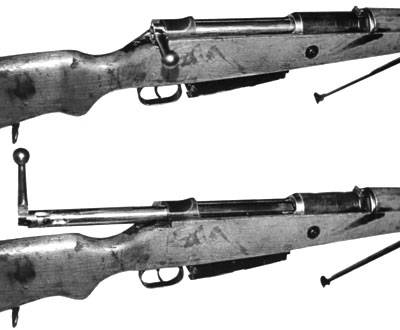 According to its design, the weapon is a rifle with manual reloading with a bolt locking the barrel bore for three stops - two in front and one in back. The anti-tank rifle has a safety device controlled by a ring in the back of the bolt. So in order to remove the drummer from the cocking with the gate closed, you should turn the ring 90 degrees. For the subsequent cocking of the drummer, the ring turns again and is pulled back, leaving the shutter closed. Thus, it is relatively safe to move with a weapon with a cartridge in the chamber, which is important for calculating the anti-tank gun, which unmasks itself after a couple of shots.
According to its design, the weapon is a rifle with manual reloading with a bolt locking the barrel bore for three stops - two in front and one in back. The anti-tank rifle has a safety device controlled by a ring in the back of the bolt. So in order to remove the drummer from the cocking with the gate closed, you should turn the ring 90 degrees. For the subsequent cocking of the drummer, the ring turns again and is pulled back, leaving the shutter closed. Thus, it is relatively safe to move with a weapon with a cartridge in the chamber, which is important for calculating the anti-tank gun, which unmasks itself after a couple of shots.Recoil compensation when shooting is achieved by a mass of weapons, in 9 a kilogram, as well as by a muzzle brake-compensator of recoil, there are no other devices that make the weapon more comfortable during operation.
The length of the weapon barrel is 1200 millimeters with a total length of 1760 millimeters. In addition to the three barrels and the key to replace them, the anti-tank rifle included three detachable box magazines with a capacity of 4 cartridge and a tool for maintenance of the PTR.
A clear advantage of Maroszek’s anti-tank rifle is that even one fighter can easily move with him, carrying not only the weapon itself, but also some ammunition.
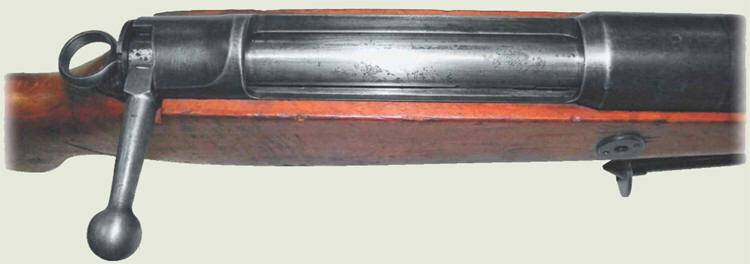
If we talk about the combat characteristics of Wz.35, then at a distance of 100 meters you could count on breaking through 30 millimeters of armor when a bullet met with armor at an angle of 90 degrees. In general, the weapon could be really effective in capable hands against lightly armored vehicles, but it must be borne in mind that there were no calculations on the handling of this weapon.
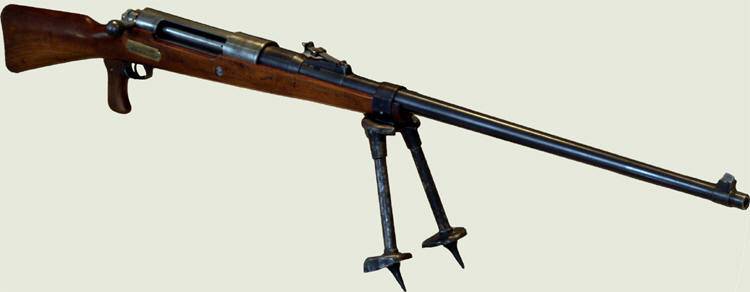
A total of about 3500 units were released from the planned 7600, although there are serial numbers that indicate the release of more than 6 thousands of PTR units. For each gun accounted for about 5000 bullets released, which is clearly enough with an excess, taking into account the low resource barrels. It is the abundance of ammunition that apparently became the reason why this weapon was put into service, first in Germany, and after Italy. It was the number of rounds that was the reason why these munitions, although rarely, could be found in collections — the weapon was over, and the cartridges remained.
Conclusion
Summing up all of the above, it is impossible not to overlook once again that the weapon does not possess any superfluous qualities that would have to be hidden. It is much more logical to explain everything related to this anti-tank gun not by secrecy, but by a combination of such factors as the need to redo the documentation and elementary saving of a weapon and ammunition resource. Even if we rely on the memoirs of our contemporaries that sealed boxes with inscriptions were delivered in parts, stating that there were medical equipment, medicines, etc., etc. with strict instructions not to open without the order of the commander-in-chief, it cannot be excluded that exactly what is written. Still, the country was preparing for the inevitable war.
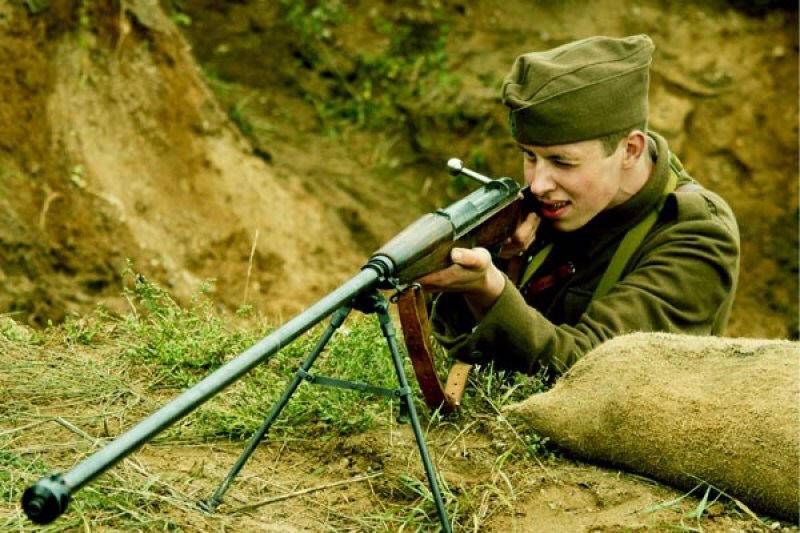
How much could change the course of history having the possibility of calculating anti-tank guns to practice on new weapons? Most likely, no significant changes could occur. No matter how hard the designers tried, but light anti-tank guns became irrelevant even before the start of World War II. Of course, for them there were targets, the fire on which was very effective, but this is too “special” weapon to believe that it can play a decisive role on the battlefield.
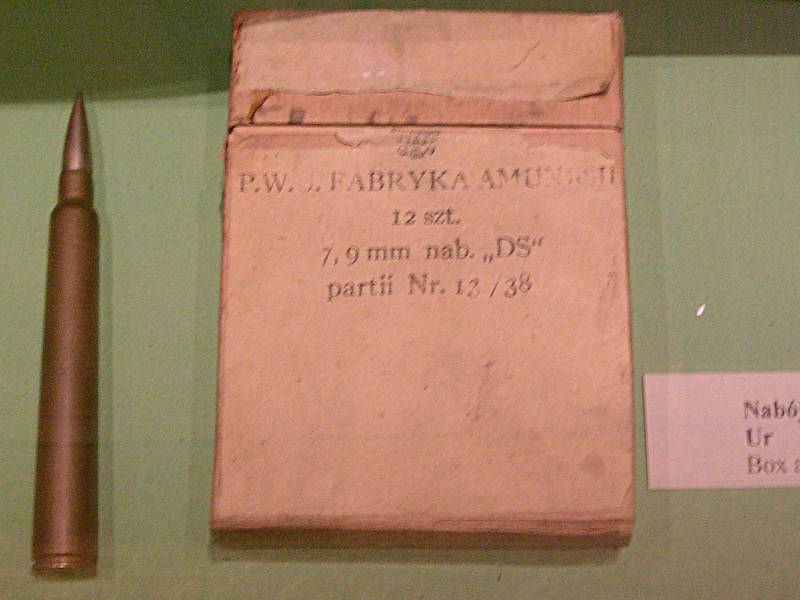
Information